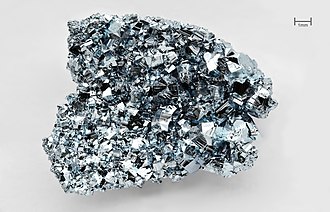Portal:Physics/Featured articles

Heavy metals is a controversial and ambiguous term for metallic elements with relatively high densities, atomic weights, or atomic numbers. The criteria used, and whether metalloids are included, vary depending on the author and context, and arguably, the term "heavy metal" should be avoided. A heavy metal may be defined on the basis of density, atomic number, or chemical behaviour. More specific definitions have been published, none of which has been widely accepted. The definitions surveyed in this article encompass up to 96 of the 118 known chemical elements; only mercury, lead, and bismuth meet all of them. Despite this lack of agreement, the term (plural or singular) is widely used in science. A density of more than 5 g/cm3 is sometimes quoted as a commonly used criterion and is used in the body of this article.
The earliest known metals—common metals such as iron, copper, and tin, and precious metals such as silver, gold, and platinum—are heavy metals. From 1809 onward, light metals, such as magnesium, aluminium, and titanium, were discovered, as well as less well-known heavy metals, including gallium, thallium, and hafnium. (Full article...)
